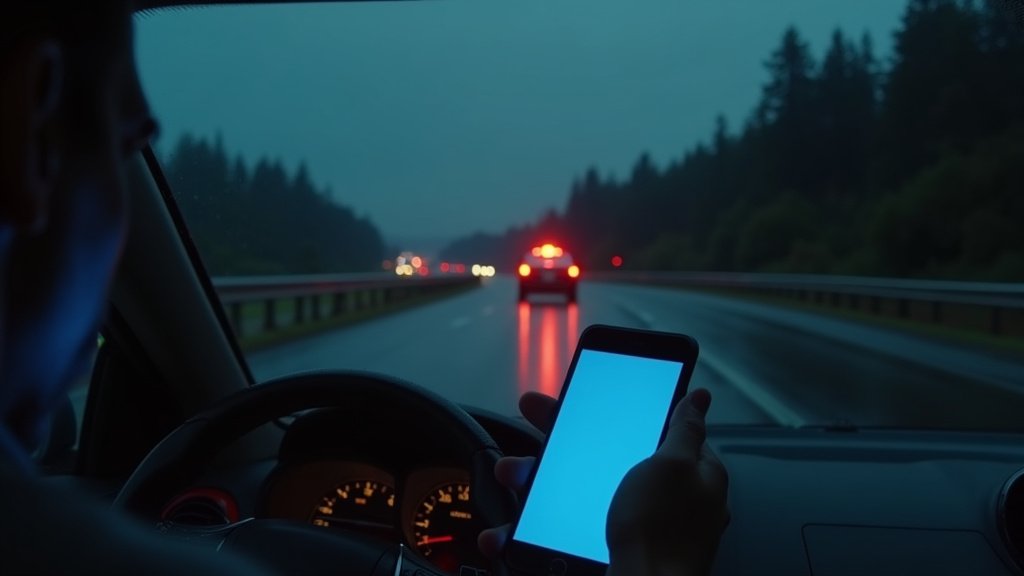Oregon’s roadways are becoming increasingly perilous, with traffic fatalities and serious injuries climbing dramatically over the past decade. While factors like speed, impairment, and environmental conditions play a role, a growing body of news analysis and data suggests that distracted driving, particularly the pervasive use of mobile electronic devices, may be significantly underreported. This hidden aspect of the crisis exacerbates the challenge of improving road safety.
The Alarming Surge in Oregon Traffic Deaths
Recent statistics paint a grim picture of Oregon’s road safety landscape. Between 2013 and 2023, the state experienced an 88% surge in yearly traffic deaths, a trend that has mirrored and, in some instances, outpaced national increases. The post-pandemic years, specifically 2021 and 2022, marked a particularly grim period, with traffic fatalities reaching over 600 in 2022—a figure described as the highest annual toll in decades. While preliminary data for 2023 and early 2024 indicate a slight downward trend, the overall numbers remain substantially higher than historical averages, with fatality rates per miles driven reaching a 30-year high. These trends are not isolated incidents but part of a broader pattern of increased risk-taking behaviors observed on roadways nationwide since the onset of the COVID-19 pandemic.
Distracted Driving: A Silent Contributor
Distracted driving, defined as any activity that diverts attention from the primary task of driving—visual, manual, or cognitive—is frequently cited as a significant contributing factor to this surge in crashes. The Oregon Department of Transportation (ODOT) reports that from 2017 to 2021, there were over 26,000 crashes involving distracted drivers, resulting in nearly 200 fatalities and over 24,000 injuries. Specifically, crashes involving drivers reported to be using cell phones during the same period accounted for 15 fatalities and over 1,700 injuries. These statistics, while substantial, are likely an incomplete representation of the problem.
The Hurdles of Detection and Reporting
A critical challenge in accurately quantifying distracted driving is its inherent difficulty in detection and proof. Unlike overt behaviors like speeding or impaired driving, distraction can be subtle and often requires self-reporting by the driver, which is frequently unreliable. Investigators face significant obstacles in establishing distracted driving as the primary cause of a crash. To legally access a driver’s phone records, which could provide definitive evidence of use, investigators typically need evidence of a crime, not merely a traffic violation. This requirement can prevent law enforcement from obtaining crucial data, thus hindering the accurate counting of distracted driving incidents.
Furthermore, the complexities of determining distraction at a crash scene, coupled with the lack of a comprehensive statewide citation tracking system, contribute to gaps in data collection. Interpretations of the law and the technicalities of proving device “use” can also create enforcement difficulties, meaning that even when drivers engage in distracting behaviors, they may not always be cited or convicted.
Oregon’s Legal Response to Distraction
Oregon has implemented strict laws, most notably ORS 811.507, which prohibits drivers from holding and using mobile electronic devices while driving, including when temporarily stopped in traffic or at a light. This law has primary enforcement status, allowing officers to initiate traffic stops solely for observed violations. Penalties can range from significant fines to, in repeat offenses, misdemeanor charges and potential jail time. The state also offers a distracted driving avoidance course for first-time offenders whose violation did not contribute to a crash, which can lead to a fine waiver, though the violation remains on the driver’s record. Despite these stringent measures, the problem persists, underscoring the gap between legal prohibition and actual enforcement and attribution of blame.
A Call for Enhanced Awareness and Data
The rising death toll on Oregon’s roads demands a comprehensive understanding of all contributing factors. The current difficulties in proving and, consequently, reporting distracted driving mean that its true impact on road safety is likely underestimated. This news analysis highlights the critical need for ongoing efforts to improve data collection methods, enhance enforcement strategies, and reinforce public awareness campaigns. Addressing the multifaceted nature of distracted driving is essential to turning the tide on Oregon’s alarming traffic fatality trends and making the state’s roadways safer for everyone.
This editorial perspective underscores the vital importance of accurate data and enforcement in tackling the pervasive issue of distracted driving within Oregon’s overall road safety efforts.




